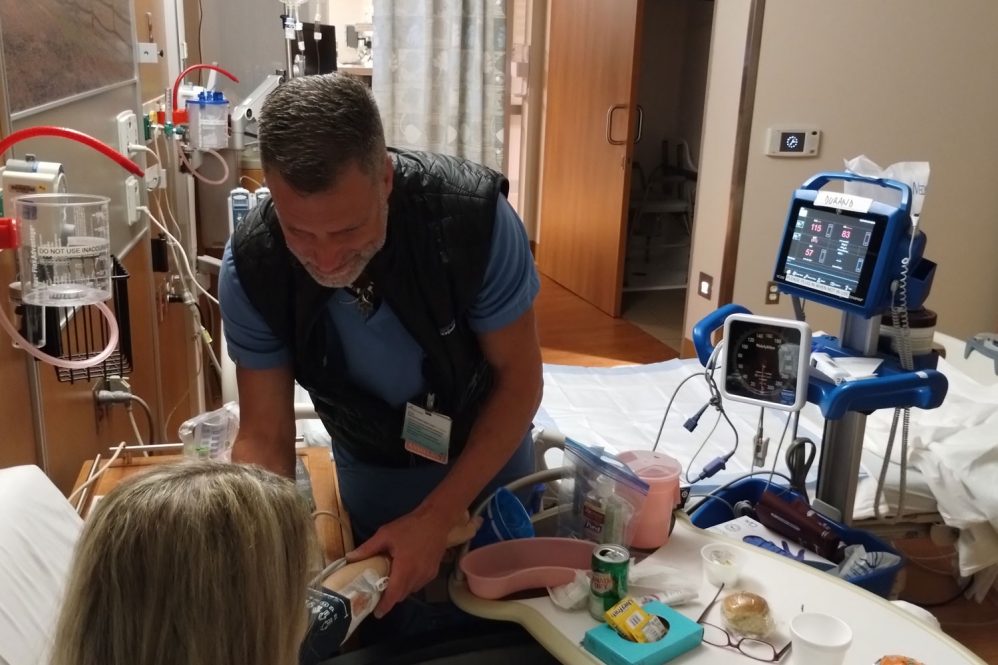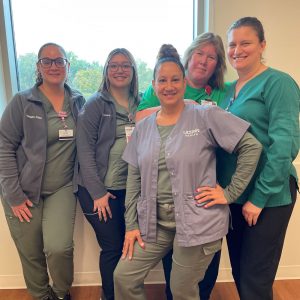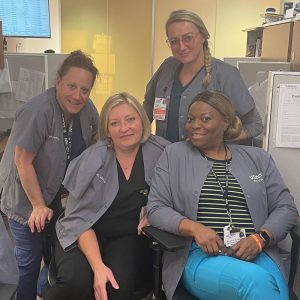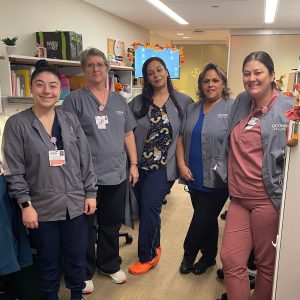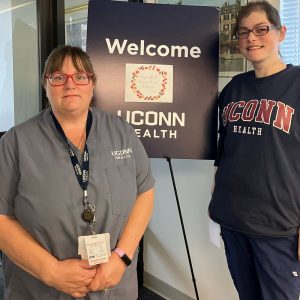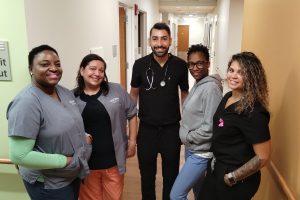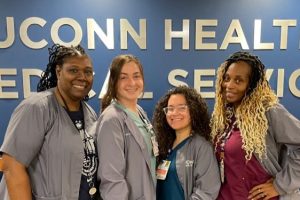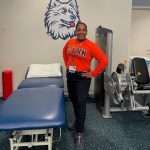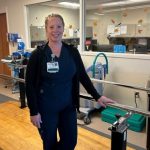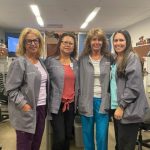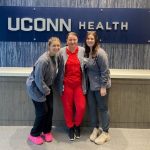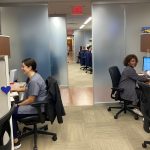Among the teams of clinicians at UConn Health are more than 260 medical assistants, working mostly in outpatient settings, but also on hospital floors.
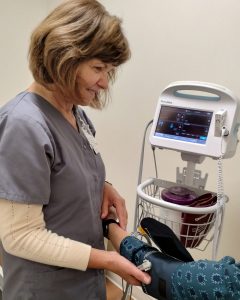
MAs are allied health professionals with both clinical and administrative responsibilities. They take medical histories, prepare patients for examinations, and can assist physicians during the exam. They also can draw blood, collect and prepare lab specimens, perform electrocardiograms, and remove sutures and change dressings, in addition to other duties specific to their practice area.
And they are vital to UConn Health’s patient care mission.
“The medical assistants play an extremely critical role in our day-to-day operations within our clinics,” says Anne Horbatuck, vice president for ambulatory operations and chief operating officer of the UConn Medical Group. “They are among the first clinical people our patients interact with, setting expectations for the excellent quality care that we deliver. They are critical members of our care team and I want to thank them for all they do.”
Gina Blauvelt has been a medical assistant at UConn Health for 26 years, first in the Carol and Ray Neag Comprehensive Cancer Center, then in the emergency department, and now in the dermatology practice, where she works with the Mohs surgeons.
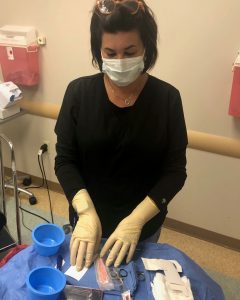
It’s a practice that can see 30 or more patients in a typical day. When a patient is in for a procedure, Blauvelt explains the process and provides reassurance.
“I love the patients,” she says. “In Mohs we see a lot of elderly patients. They are scared and do not understand what is going to happen to them; they need to know they aren’t alone. It’s like we need to get on a personal level with them, making sure they know my name, who we are and that we are here for them. So being patient and walking them through the process is what I love.”
She also will room patients for consultations for follow-up appointments, help turn over the exam rooms, assist with the pathology, answer phone calls, and help mentor new hires.
“In my opinion there are so many different jobs a medical assistant can have, a huge variety of learning possibilities,” Blauvelt says. “I think that in my position as a medical assistant I strive to make our schedule run as smooth as possible, almost like being a ‘cruise director.’ I try to gather all the information needed for the doctor so he is well informed before going to see the patient.”
Cameron Norton is a newer dermatology clinic colleague, arriving earlier this year from a private dermatology practice. His first experience working in health care was at UConn Health in 2020, when he shadowed Scott Harrison, a physician assistant in the Pat and Jim Calhoun Cardiology Center.
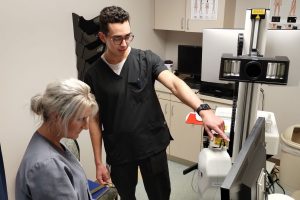
“My favorite part about being a medical assistant is interacting with patients on a daily basis and working closely with providers while learning about dermatologic diseases and treatments,” says Norton, himself an aspiring physician assistant.
In addition to setting up rooms for biopsies and procedures, Norton takes photos of skin lesions and rashes notable to the providers, performs an optical imaging technique known as confocal microscopy, and helps document patients’ lesions over time with an imaging tool called Fotofinder.
“Working as a medical assistant is great health care experience for those seeking to advance their career in health care as future nurses, physician assistants, or doctors, just as I am,” he says. “The providers at UConn are very supportive of us advancing our personal careers in health care.”
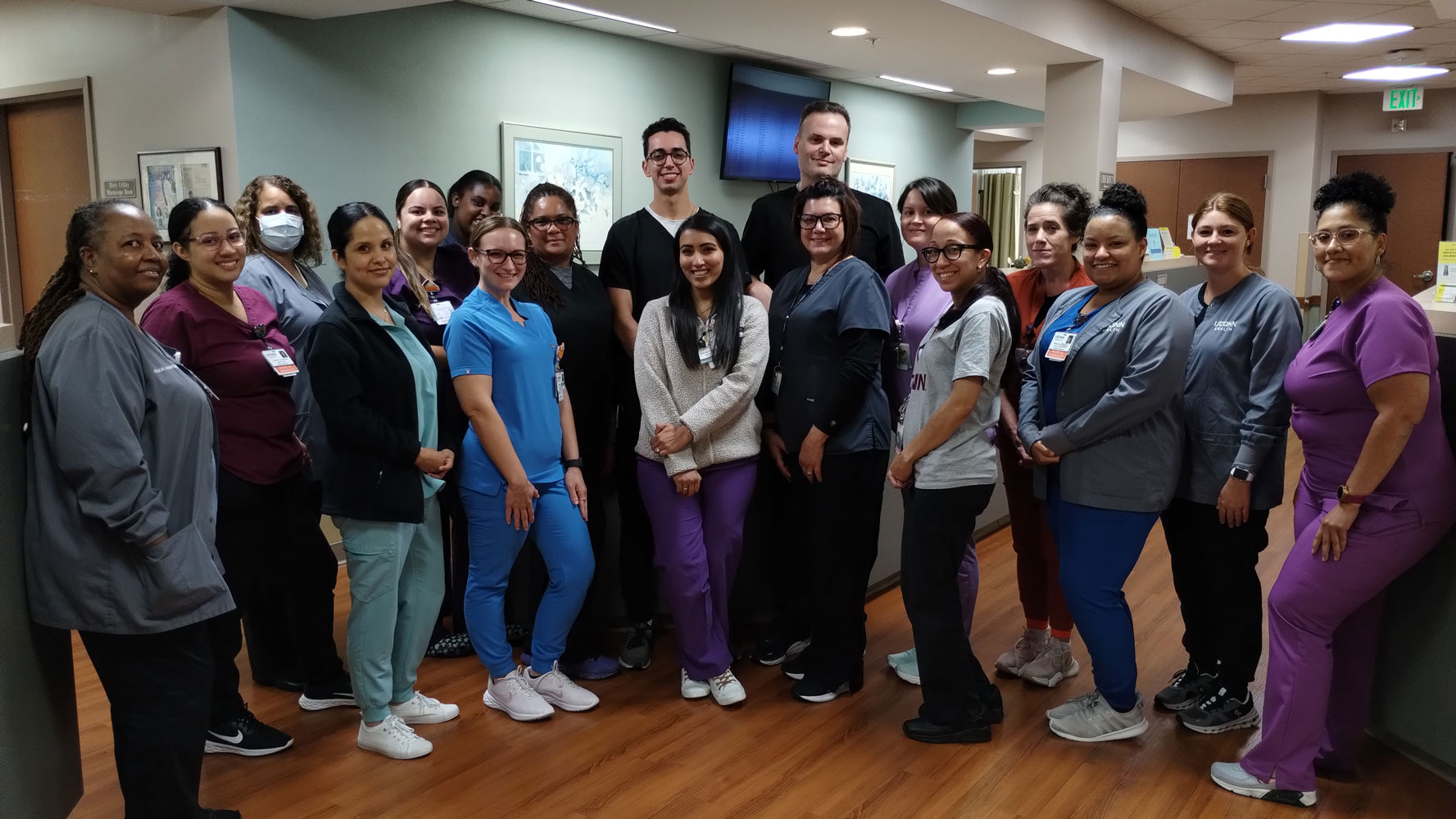
On the fifth floor of the UConn John Dempsey Hospital, Durand Tessier works 7 p.m. to 7:30 a.m. three nights a week. He started at UConn Health as a respiratory therapist in 1993, and has been a medical assistant since 1995. He’s been caring for orthopedic surgery patients for the last 27 years.
“We all represent an extremely fast-paced unit with a large turnover of patients on any given day due to the type of clientele we provide services for,” Tessier says. “We can often be overwhelmed with the degree of patient care needs and experience being short staffed and/or lacking necessary supplies, but when the storm settles we remain united to meet the demands to the best of our abilities.”
A typical night for Tessier on what’s known as “Orth-Surg 5” includes obtaining vital signs, recording outputs from voiding and drains, observing patients’ skin conditions, mobilizing patients to promote skin care and wound prevention, tending to patients’ hygiene needs, aiding in pain control, gathering bedside lab specimens, and stocking various areas on the unit such as nurse servers and medication rooms.
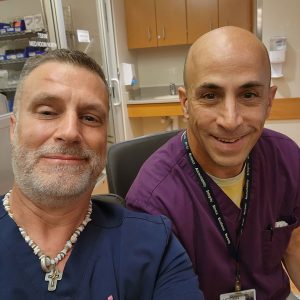
He says his job also requires awareness of patients’ orders, allergies, dietary requirements, changes noted in the health record, and any struggles patients are experiencing related to their diagnosis, as well as a proficiency using a wide range of patient care equipment and supplies.
Tessier says one of the major influences that shaped his work ethic is his Christian faith.
“God views work as very good and is something to take pleasure in having accomplished,” Tessier says. “Work should be conducted in a way that produces the highest quality outcome. Thus work reveals something about the one doing the work..
The other influence was his father, who adopted him when he was 6.
“My father owned his own business and founded it upon godly principles providing not only for his family of 15 children but the many families that his company employed,” Tessier says. “He promoted a strong work ethic and taught me to make oneself indispensable.”
Tessier is one of three-dozen UConn Health MAs who work in an inpatient setting.
“Our medical assistants are crucial members of our care team across UConn Health, enabling us to deliver outstanding care to our patients,” says John Dempsey Hospital Chief Operating Officer and Chief Nursing Officer Caryl Ryan. “In our hospital, this requires work at all hours of the day and night, weekends and holidays, which I’d especially like to acknowledge and recognize. Our medical assistants make a tremendous difference for our patients, as we all work together to continually elevate our standards of patient care, quality, and safety. We would not be as successful as we are without our medical assistants.”
Tessier’s role has evolved to include proactively organizing the overall unit’s supplies and equipment, and associated storage areas, including troubleshooting, and he has become a resource for floor policies and practices.
“I am presently helping in promoting a CNA/MA Ortho-Surg 5 team that meets regularly to encourage communication between staff on days and nights and between nurses and assistants in general,” Tessier says. “It is our mission to promote a unit atmosphere that encourages open communication between peers, strengthens our united teamwork, excels our patient care and improves our willingness to assist each other in the tasks at hand. Within this group we are open to discussing ways to improve care, including trying new products and care routines that reduce time and resources and provide a healthier environment for both patient and staff.”
In the pulmonary medicine clinic, Melissa Peck is in her third year as a medical assistant following a year as a clinic office assistant. In addition to taking vitals and scheduling patient follow-ups, her responsibilities include administering breathing tests, processing CPAP and BiPAP oxygen, nebulizers, and overnight pulse oximetry orders, and helping patients with durable medical equipment vendors. She also assists with patient correspondence.
“MAs are the major link between the patients and the doctor,” Peck says. “We keep the flow and communication going.”
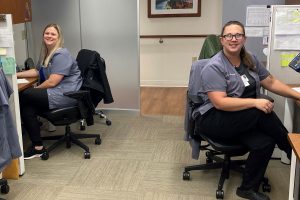
In her first year as an MA, she floated between pulmonology and nephrology. She still covers in nephrology from time to time, performing additional duties specific to that area such as urinalysis, urine orders, result orders, and preparing documents for dialysis.
“I love the diversity of tasks and work,” Peck says. “Helping patients and solving problems is most rewarding. The location and the benefits brought me here, and the atmosphere, my coworkers, my supervisors, my department, my job and duties, and benefits keep me here. I love what I do!”
This year, Medical Assistants Recognition Week is Oct. 16-20.
